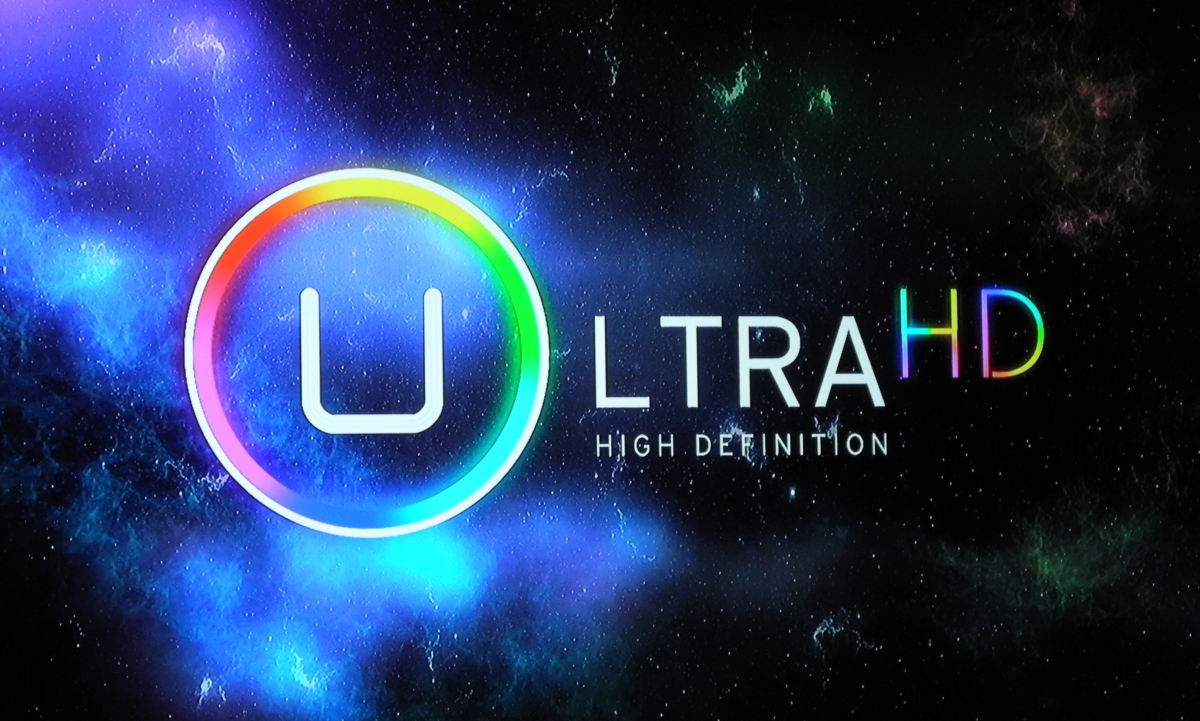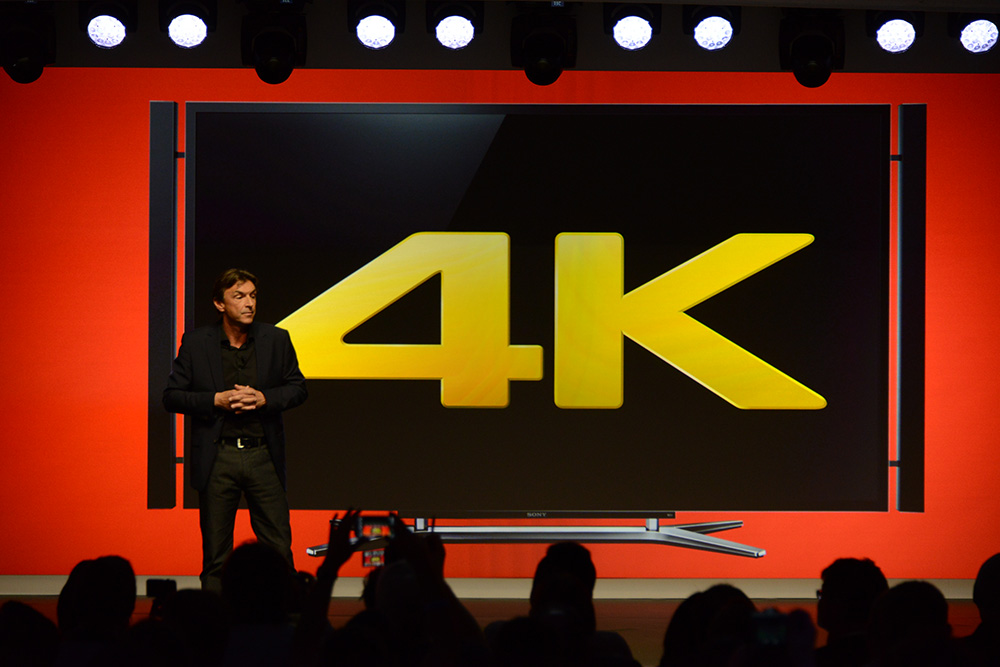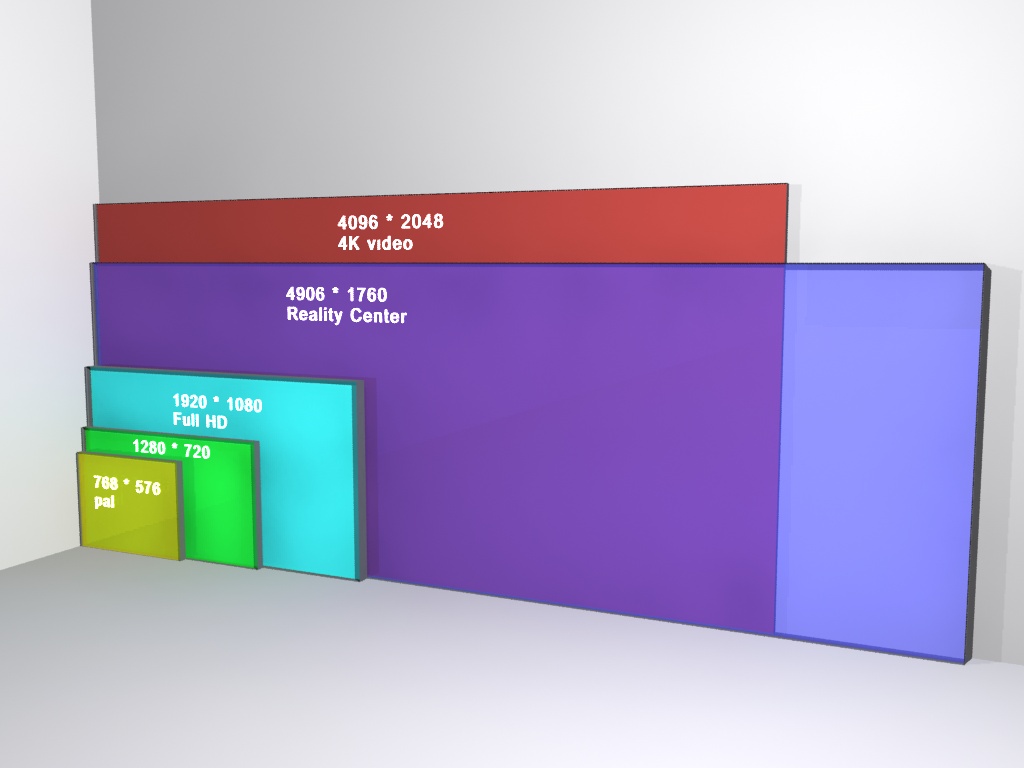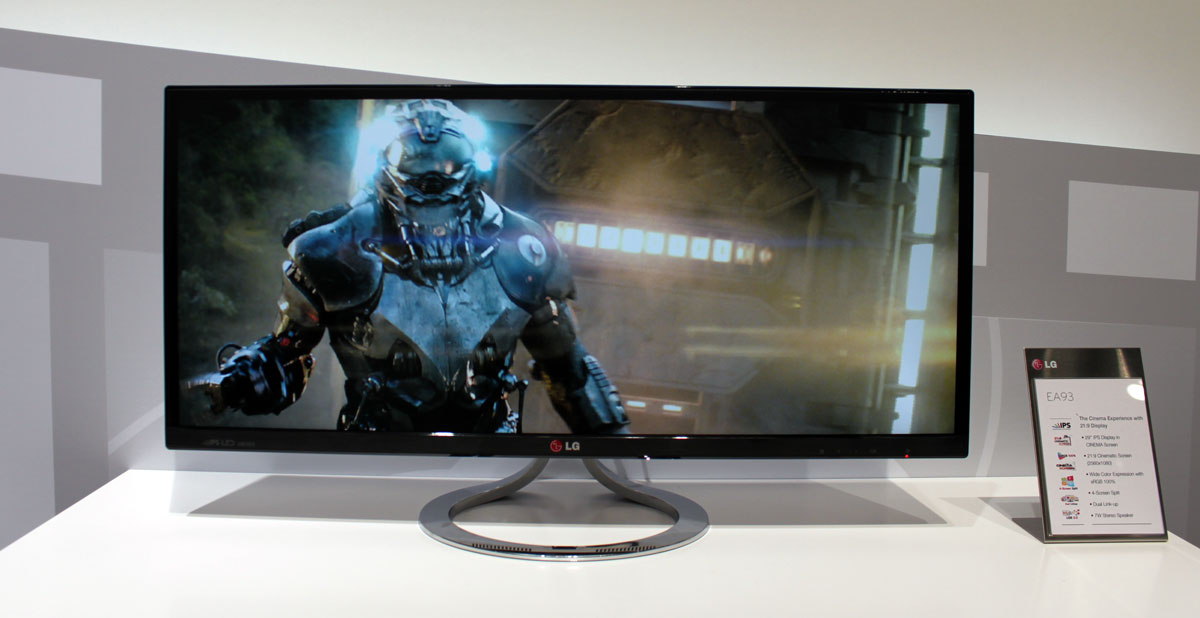For the last couple of years TV manufactures have unveiled several next generation displays that go way beyond the HD resolution. For years Sony, Samsung, LG, Sharp, Panasonic, and Toshiba have been showing off TVs that have a native resolution of 4K, 6K, 8K, and beyond, mainly as tech demos in order to demonstrate that it is possible to make a TV that goes way beyond 1080p.
But this year it seems that everyone is getting really serious about 4K. All the main TV manufacturers have announced that they will be selling 4k TVs this year. Sony and Samsung have specifically revealed Ultra HD 4K TVs ranging from 55” to 84” with an actual native resolution of 3840 x 2160.

Of course like most first generation products, these TVs are going to be expensive as heck. In fact the 84” 4K Display from Sony is going to retail for $24,999.99. Which sure, is not as expensive as the first plasma TV back in the early 2000s which went for almost 50k and over ten years later the plasma technology got better and 50 times less expensive. So perhaps we will see a similar history with 4K TVs in the upcoming years. But we do face a whole different set of challenges with 4K.
The main problem with 4K deals with content, content, and more content. The fact still stands, currently there is no mainstream consumer 4K media available. Never mind any kind of 4K digital distribution system, no one is really ready for this huge jump in resolution. Moreover, today it’s even difficult to find media that is anything beyond 1920X1080. I think we have to understand that 4K is a standard that everyone should aim for, rather than a format that will just appear out of nowhere.
Another problem is 4K Content creation. Hollywood shoots most of its films digitally. Cameras such as the Red Epic and the Sony F65 can shoot up to 5K But most digital cameras such as the Arri Alexa, Sony f35, Panavision Genesis, and the Si 2K can only shoot up to 2.8K. So therefore recent films such as Skyfall, Prometheus, and Avengers will never be available in true 4K because they were shot at a lower resolution. These films of course could be upscaled but again will not be in true 4K resolution. Interestingly, most theaters all across north america present movies in 2k. The films are shipped to theaters on 200Gb-300Gb hard drives, which in terms of quality is really a higher bitrate version of a movie than what you would find on a typical 80Gb blu-ray disc.
The good news is movies originally shot on celluloid, will still live on in the world of digital 4K. 35mm film can be blown to almost any resolution you want, but the clarity seems to break up beyond 4k. But at 4k a clean 35mm print should look fantastic, and will once again bring new life to older films, much like blu-ray did in its early years. Better yet, medium format film such as the 70mm classics and Imax will look absolutely incredible in Ultra HD, you could even blow them up to 8K. This unique advantage may even bring new life to the film industry that focuses on resolution rather than 3D and gives celluloid a second chance.
Now we should acknowledge that there are way to see 4K content. Youtube has several videos that are in 4k, although the compression makes most of it look like upscaled HD. Pictures from your Digital SLR are pretty high resolution as well, and would certainly look great on a 4K display. But hopefully more content will be available in the future so you don’t have to spend $25,000 and only get a fancy looking 84” digital picture frame. Interestly, 4k tvs may even more of a possibility for the average consumer since Westinghouse is going to offer its sets starting in the first quarter at the bargain suggested retail prices of $2,499 for the 50-inch set, $3,000 for the 55-inch set and $3,995 for the 65-inch set. But unlike Sony and LG, Westinghouse’s models will be barebones displays with no on-board Smart TV features and no elaborate 4K up-conversion video processing technology. But that price point will certainly be attractive to anyone looking to get the first 4k Tv.
The first most practical 4k display that people would actually like to buy would likely be a computer monitor. Many power users today use multiple displays for their desktop computers, So perhaps one 4k monitor could replace two or three monitors and provide a more seamless desktop experience. It has been many years since we have seen a jump in monitor resolution, in fact that Dell 30” 2560X1600 monitor that come out 6 years ago is still the best monitor option in term of resolution. What is unfortunate is that you can’t even buy a 2560X1600 displays in your big box retail store, most of their monitors are 1080p. So 4k certainly would give customers the option to get a monitor that has a higher resolution than 1080p.
Lastly at the end of it all, 4k is an amazing technology that will pave the road for future displays. And even though availability and practicality for ultra HD displays is limited at the moment i predict that in the years to come 4k displays will become the norm, much like high definition displays today.





Hi, just wanted to say i liked this article. it was practical. keep on posting.
Check out my seo blog 🙂 http://goo.gl/AtwWB
Hi there, just changed into alert to your blog thru Google, and located that it’s truly informative. I am gonna be careful for brussels. I will appreciate if you continue this in future. Lots of other people will probably be benefited from your writing. Cheers!
I’ve been surfing on-line more than three hours nowadays, yet I never discovered any fascinating article like yours. It’s beautiful price enough for me. In my view, if all webmasters and bloggers made good content as you did, the internet shall be a lot more useful than ever before.